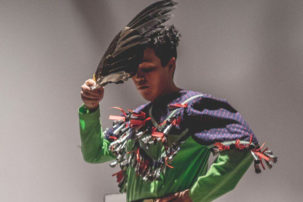Whether you’re a painter, a sculptor or photographer, you also have to be a writer. “The artist statement, or your mission statement, is a basic introduction to your art,” explains Business Skills for Creative Souls: The Montreal Artist’s Handbook. This mission statement is often an essential part of applications and proposals for residencies, grants and exhibitions. Here’s how to write a short and simple statement, while also ensuring that your application stands out.
The Cultural Human Resources Council’s online guide, The Art of Managing Your Career, describes how to write a mission statement. According to the guide, a successful mission statement begins with an identity statement: “This is usually a single sentence that effectively captures the essence of the business. Usually written in the present tense, it is almost identical to a one-sentence description of a novel’s plot.” To help figure out what to include in your identity statement, the guide suggests asking yourself the following questions:
- Who am I? (Your name or the name of your business);
- What do I do? (The nature of the product or service you provide);
- How do I do it? (What you do in terms of quality, context, et cetera); and
- For whom do I do it? (Your customers/clients/audience).
By adding information about your goals, objectives and future plans, you can expand this sentence into a full mission statement. (The guide includes several examples of identity and mission statements.)
You may have trouble figuring out what you want to say, or saying everything in just a few words. To help with this, The Art of Managing Your Career suggests working with a colleague, who can ask you questions and help you to make your statement clearer. In conversation with this colleague, you can you explain “what drives you as an artist, what excites you, who or what influences what you do, and how you think your work is unique or special.”
When you are ready to write, choose your words carefully. “With any piece of writing,” says Kitty Scott, Director of Visual Arts at the Banff Centre, “I always advise being clear, concise and economical. If you don’t have anything to say, don’t say it.” That means keeping your statement to “about 150 words.”
Be prepared to revise your artist statement from time to time. “Your artistic vision or statement is not set in stone,” notes The Art of Managing Your Career, “so you can revise it as you gain more clarity. Even established artists rewrite their vision statements as their careers evolve and their values change.”

 Image Source/Getty Images
Image Source/Getty Images







